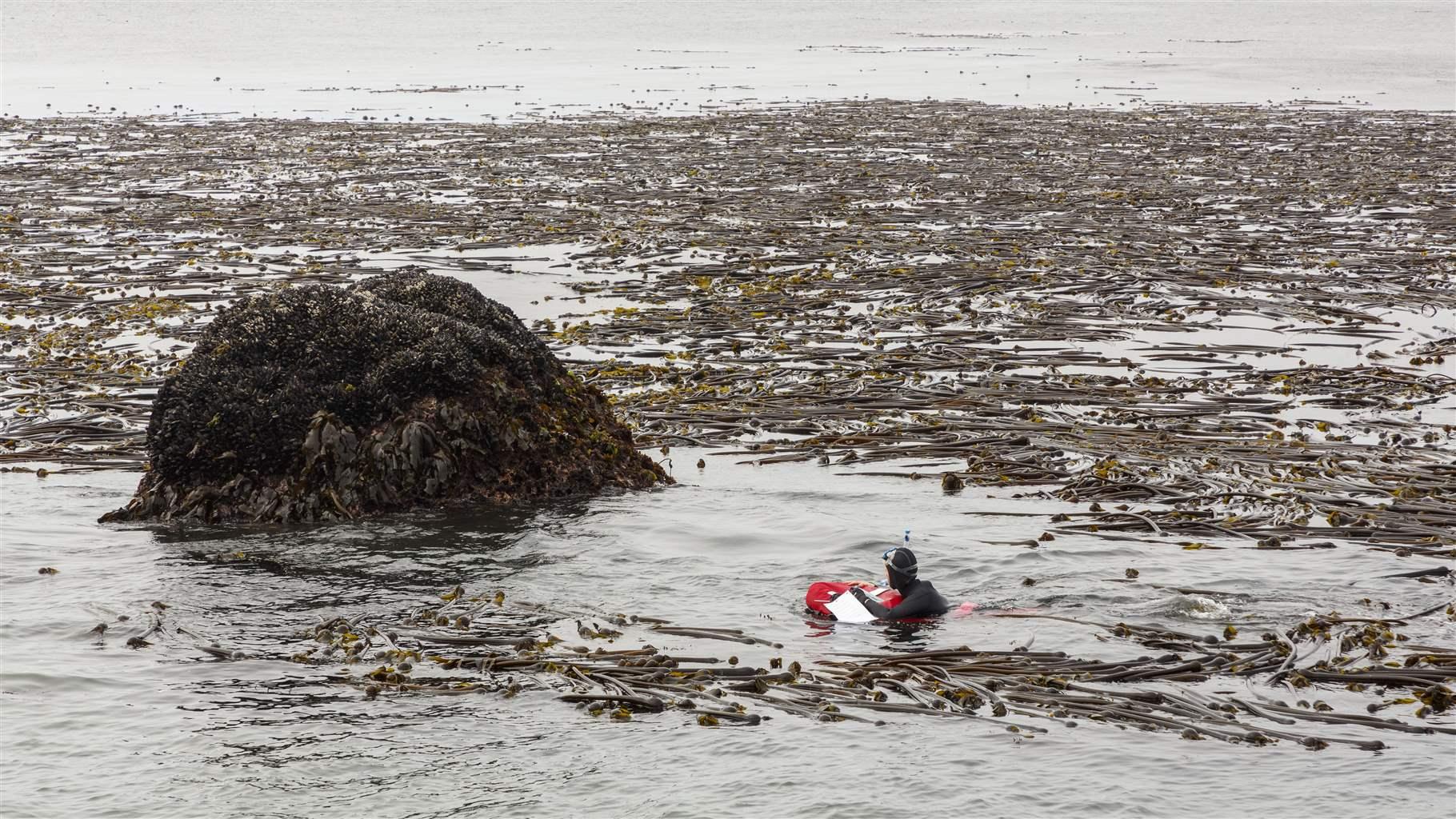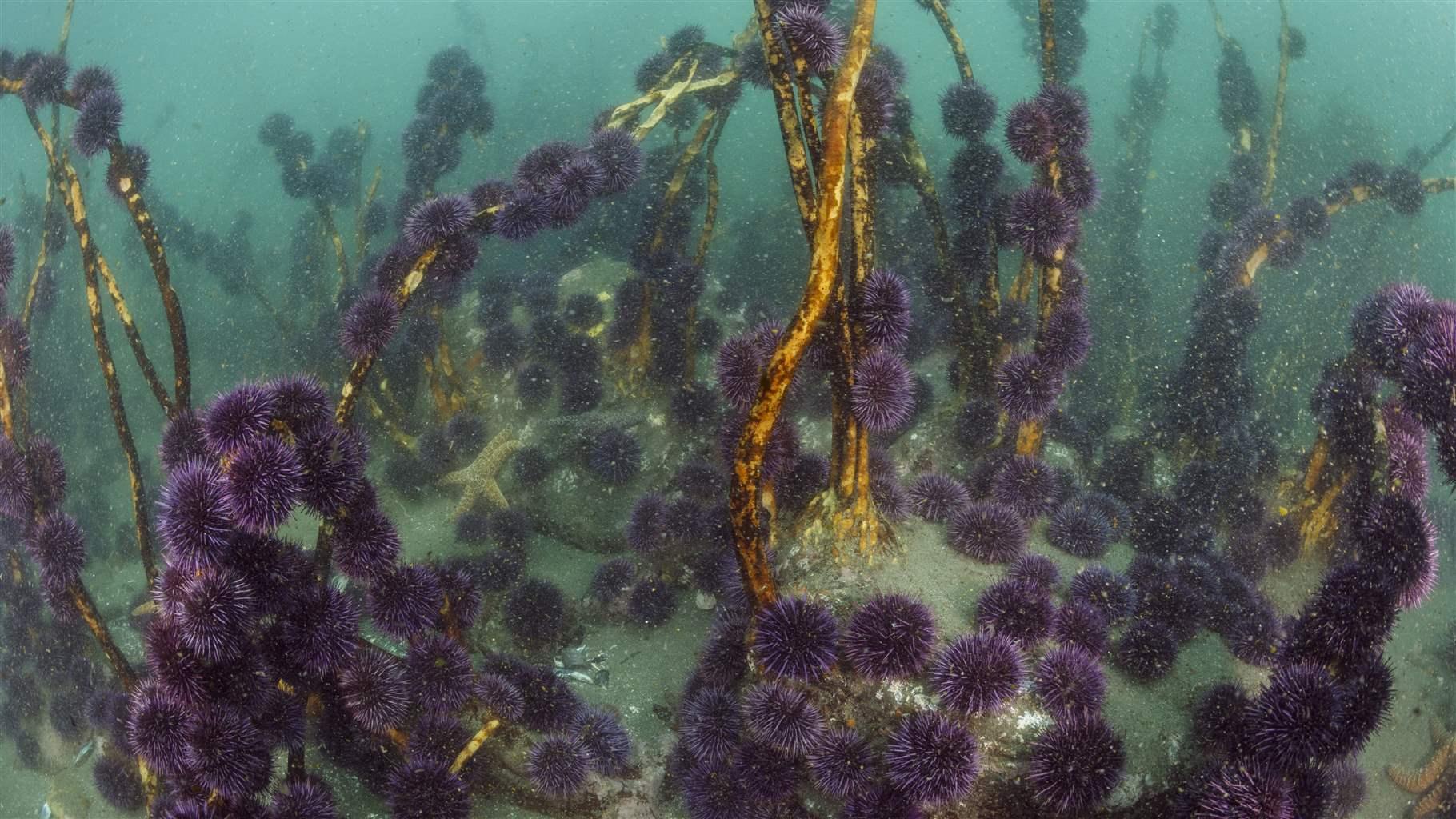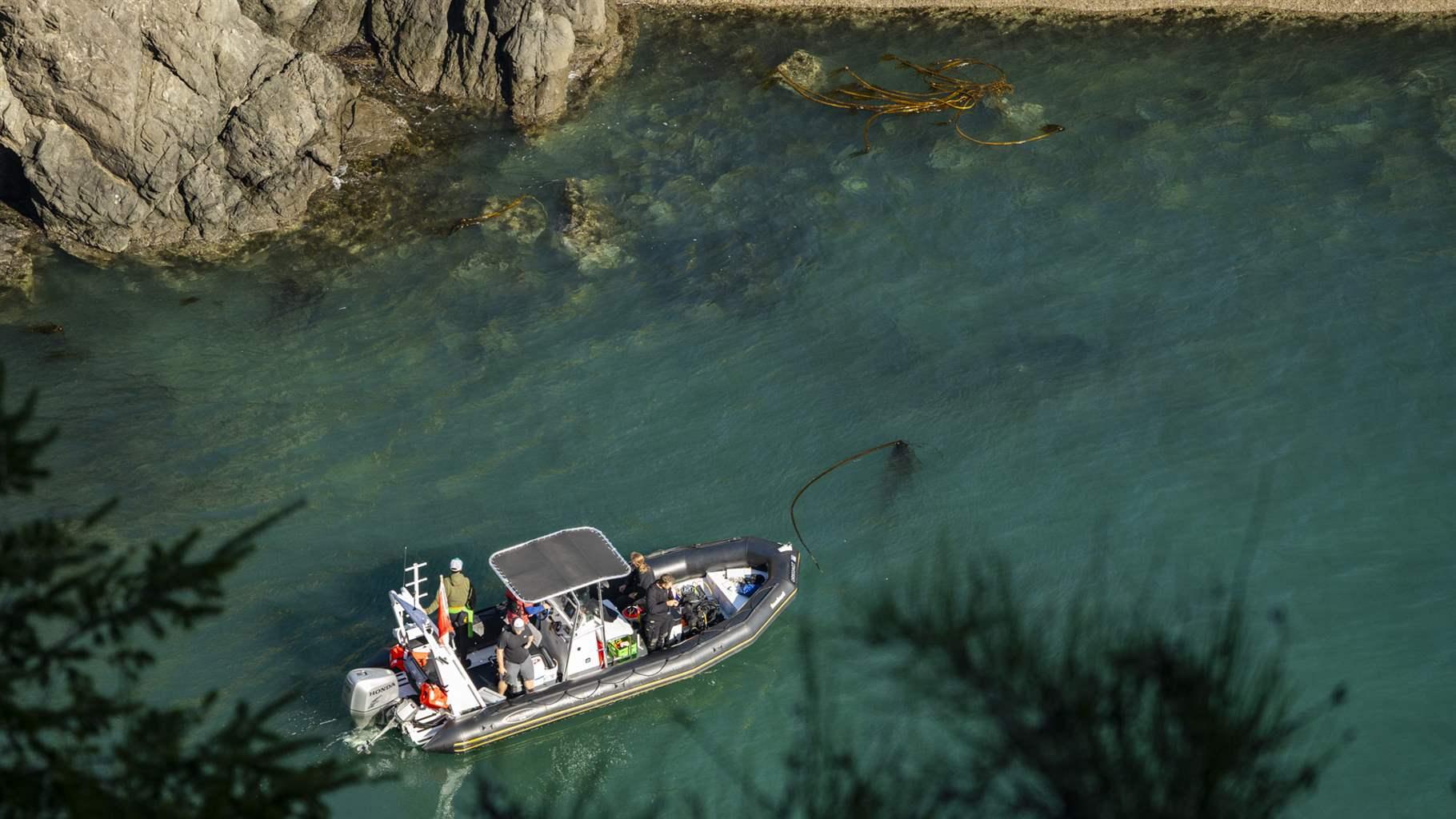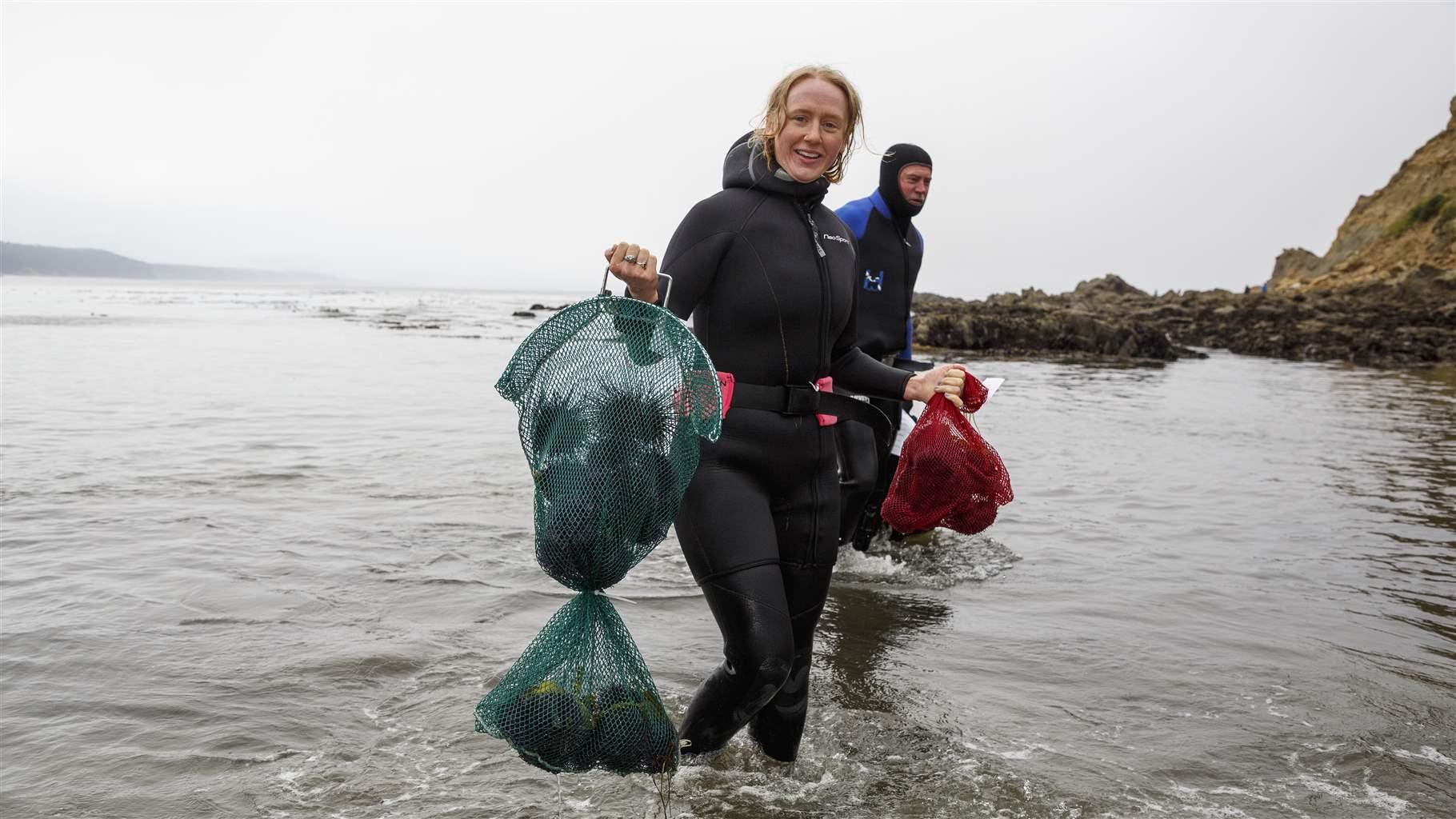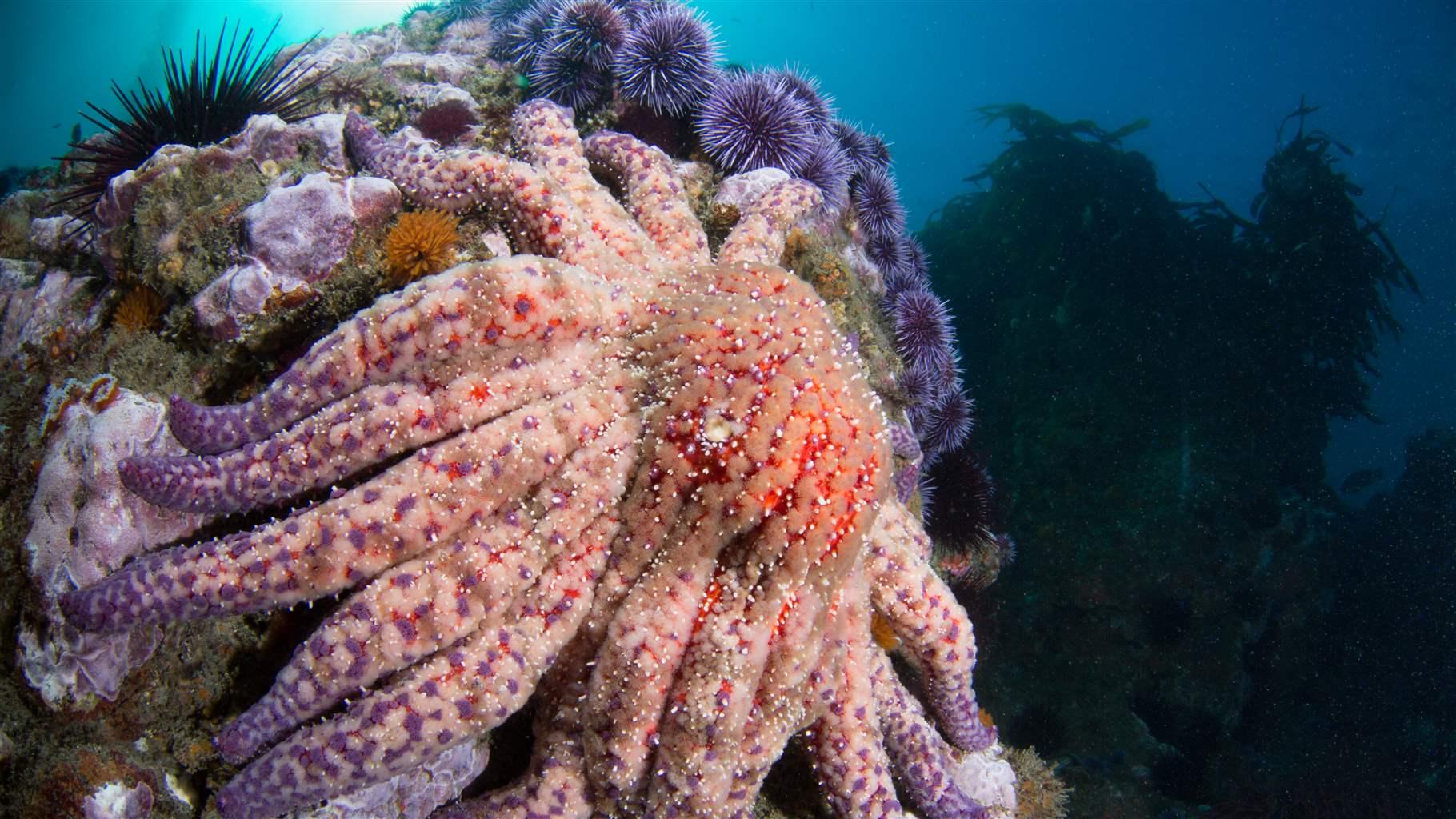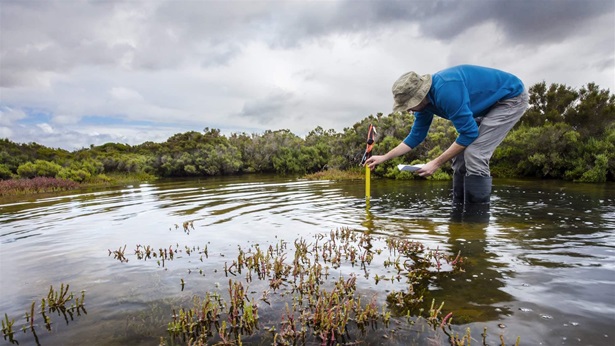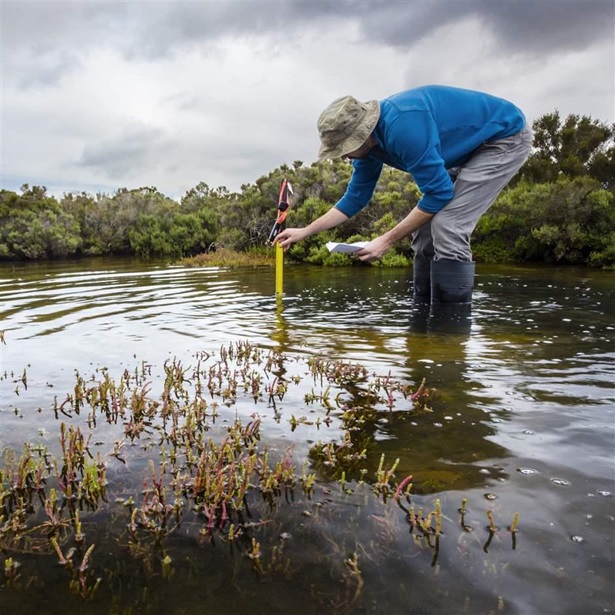Scientists, Volunteers Work to Restore Oregon Kelp Forests
Conservationists describe how they and others are fighting dire threats to marine habitat
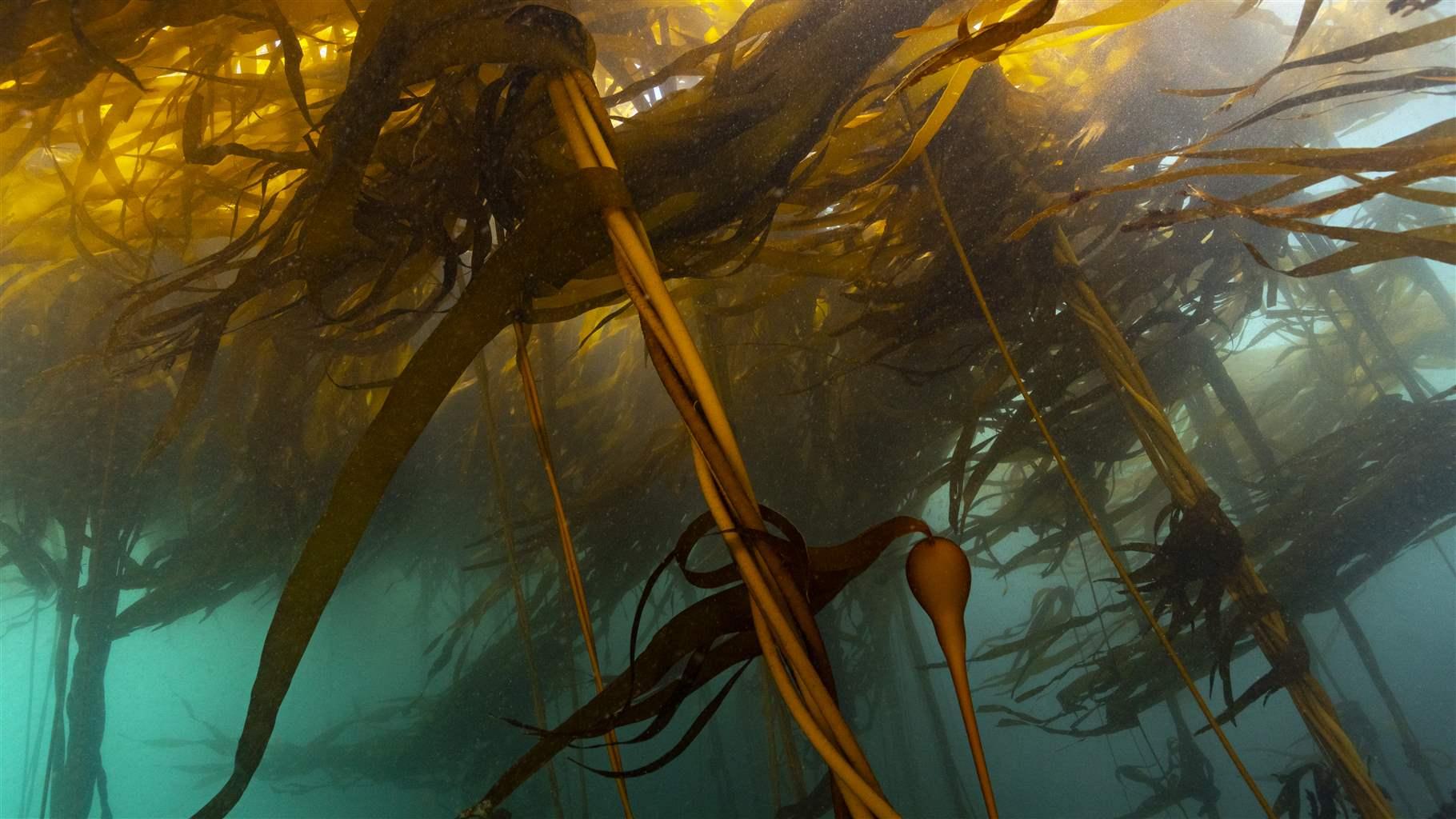
Oregon’s near-shore rocky reefs were once home to lush bull kelp forests that supported a bounty of high-value ground fish and the state’s largest commercial red urchin fishery—as well as other marine life that has made the Oregon coastline a tourist destination. But large swaths of the iconic marine algae have been devastated in recent years, leading to the creation of the Oregon Kelp Alliance (ORKA). And the demise of kelp in beloved places such as Nellies Cove—part of Port Orford Heads State Park in southwestern Oregon—prompted the local community to step up to help protect and restore these life-sustaining underwater forests.
These “kelp forest defenders,” as one commercial fisherman has dubbed them, are helping with a project to remove purple urchin—launched in part with a grant from The Pew Charitable Trusts—and with efforts to create a commercial fishery to help keep the problematic kelp grazer population in check in Oregon’s coastal waters. ORKA also is gathering data for a congressionally funded comprehensive kelp status report and recovery plan —all in service of preventing the collapse of the area’s kelp forests and putting this vital fish habitat on the road to recovery.
This interview with ORKA director Tom Calvanese and scientific coordinator Sara Hamilton has been edited for clarity and length.
Q: What’s the state of Oregon’s bull kelp forests?
Hamilton: In southern Oregon, where the majority of the state’s bull kelp forests are located, kelp has been almost entirely wiped out in some places. We’ve also observed kelp forest declines in central Oregon—for example, in the Newport area, Pacific City, and at Cape Lookout.
And some of those reefs in southern Oregon are really important to local community members and to commercial fisheries. Then there are some reefs where we haven’t seen major changes in bull kelp canopy cover—and even some, like Rogue Reef and Depoe Bay, that are doing better than they have in the past 15 to 20 years.
Q: Why the disparity? Do we know?
Hamilton: The reasons are still not clear.
Q: When did the bull kelp decline in the Port Orford area begin?
Hamilton: If you look at satellite-based evidence, some kelp forests have been struggling since about 2000. Some, like Redfish Rocks, started to nosedive in 2015 to 2016.
Calvanese: That’s consistent with reports I’m receiving from commercial divers about the loss of kelp at Orford Reef—previously Oregon’s largest kelp forest and the center of the red urchin fishery until very recently.
Q: What caused the decline?
Calvanese: A perfect storm that includes things like the warm blob—that’s a mass of warm marine water that moved toward the coast and is really bad for kelp, which needs nutrient-rich cold water. At the same time, there was both an explosion in the purple urchin population that eats kelp and the loss of sunflower sea stars that prey on purple urchins.
Hamilton: I agree with Tom: It’s probably a complex interplay of purple urchins, loss of urchin predators such as the sunflower sea stars, and rising water temperatures. Scientists are still teasing out the details. One bit of critical context: Historically, there hasn’t been a lot of kelp forest research in Oregon. It’s not like California or parts of southeast Alaska or British Columbia where kelp have been monitored for decades. So we have some catching up to do in trying to understand what’s going on where and in picking apart the causes.
Q: How did your organization, the Oregon Kelp Alliance (ORKA), get started?
Calvanese: With a small grant from Oregon Sea Grant.
Q: That’s part of Oregon State University, which is also where you got your Ph.D., right Sara?
Hamilton: Yes, Congress created the Sea Grant College Program through the National Oceanic and Atmospheric Administration almost 60 years ago, and OSU began hosting the Oregon program in 1971.
Q: OK. Back to ORKA’s work…
Calvanese: The funding from Oregon Sea Grant—part of a National Oceanic and Atmospheric Administration collaboration with Oregon State University—enabled us to pursue the early investment from Pew. And Pew’s investment enabled us to pilot our kelp forest restoration work—beginning with purple urchin removals in Nellies Cove. We then asked Congress two years ago for funding to do a kelp status report. We secured nearly $1 million to do a first-time inventory of Oregon’s floating and understory kelp and related species and to produce a restoration plan to actively manage their recovery. The plan will be finished in 2024.
Q: How has the local community responded?
Calvanese: People really galvanize around this when they realize the connection to commercial fisheries. I’ll give you an example: We had 30-some divers—spearfishers, photographers, scientists—come from all over Oregon, and even from Seattle and California, the first weekend we gathered to initiate this work at Nellies Cove in the summer of 2021. Many of them came back for multiple weekends. And many divers came out of the water and said, “Wow, this really feels like I’m diving with a purpose.”
I think until then we all took Nellies Cove for granted. It’s a beautiful place. The kelp came back every year and then we started to see it going away and that really shocked a lot of people—and it drew us together. And we aren’t the only ones being moved to act; a web-based book about kelp was just created that highlights the interconnectedness with humans and other species from central California to the Aleutian Islands in Alaska. On a global scale, the Kelp Forest Alliance recently launched the Kelp Forest Challenge to link the place-based conservation kelp work around the world. ORKA pledged, and it feels good to be part of a larger community taking action to help kelp forests.
Hamilton: Over the past decade or so, we’ve seen collapses in kelp forests in Australia, Tasmania, Chile, Portugal, and the U.S. And every single place it’s happened, the community comes out and says, “We’re not OK with this. What can we do?”
Q: What’s being done in addition to purple urchin removal?
Calvanese: Another colleague and I are working on an Oregon Sea Grant-funded project to culture starved purple sea urchins and feed them cultivated seaweed to fatten up their uni—the edible part of the urchin, which some people eat as sushi—so they become commercially viable. In their starved state, they have no commercial value. We’re involving commercial urchin divers, chefs, and foodies, holding fancy dinners in Portland restaurants and showing people that you can have purple urchin uni on toast or you can have uni butter on your steak. Ecologically speaking, that’s a small part of the solution. But there’s added value to the experiment because I think it helps people connect to the issue and understand it. Hopefully that builds support for the work we need to do.
Q: That’s encouraging. So what’s next?
Hamilton: We’re building a three-pronged strategy for restoring these kelp forest ecosystems. One prong is to continue to remove urchins in small, targeted areas. A second step is to go in and actively plant kelp. Our third prong is to try to help speed up the restoration and recovery of sunflower sea stars to help control the purple urchin population.
Calvanese: We made another funding request to Congress for nearly $2.5 million earlier this year, and in July the lawmakers recognized the importance of this work and approved our request. The money will help put Oregon’s coastal communities to work promoting healthy kelp forests and building local capacity for kelp forest stewardship. Time is of the essence—we are losing kelp forests rapidly in certain areas, and these funds will give us a chance to hold on to these vital habitats and all the ecosystem values they provide.
Hamilton: It sounds like a lot of money. But humans and fish derive so many benefits from kelp forests that it’s worth the investment to get them back on track. From shoreline protection to food production and water quality, kelp forest health needs to be considered more readily by state resource agencies—and active recovery strategies need to be incorporated into their management.
